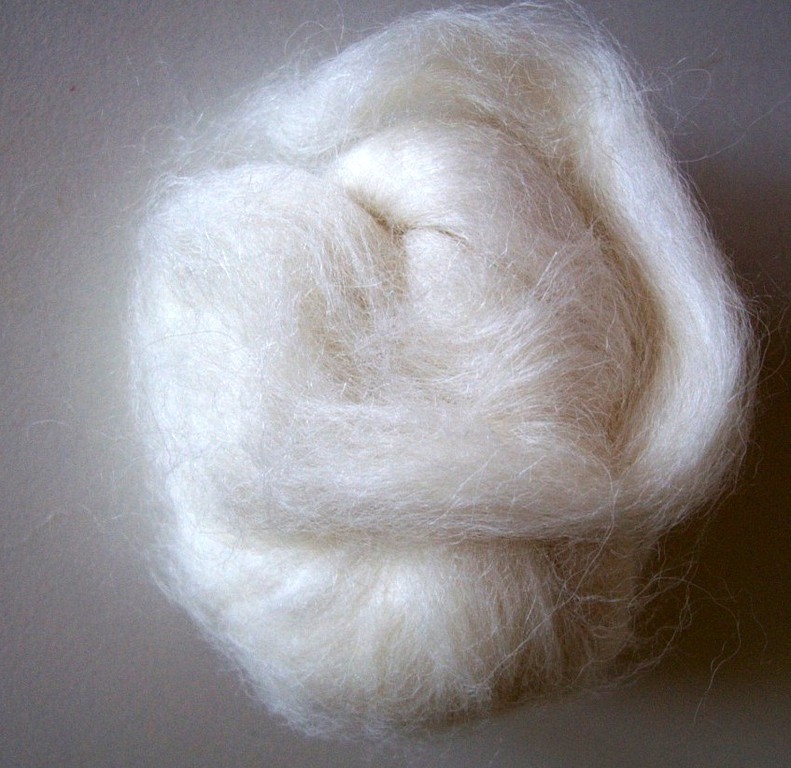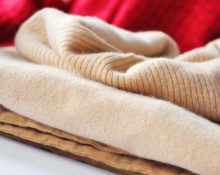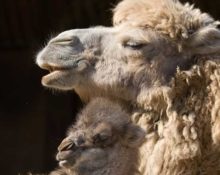Cashmere or soft gold is a fabric extraordinary in its composition and properties. Any woman will confirm that softer and more comfortable clothes simply do not exist. Warm softness, delicate lightness and a comfortable fit to the body made this material ideal for any time of year.
You can sew almost any thing from it - a delicate scarf, an elegant sweater or a light coat - cashmere can do it all.

Extraction method
Cashmere is often called wool. But that's not true. In fact, this is the down of a mountain goat of a certain breed, which is still extracted by hand. Down is collected in early spring, when the animal no longer needs it.
The undercoat of the animal is combed out with a special comb or plucked by hand, and the resulting raw material is thoroughly cleaned of dirt and removed from fur. The resulting raw materials are sorted according to the thickness and length of the hairs. Then it is sent for weaving into thin threads.

Thus, wool and cashmere are different materials, because the first is obtained by shaving the wool of sheep, the second by plucking or combing the down of goats.
Goat down was first mined in the Indian state of Kashmir, from which the name of the material comes.
Currently, the main suppliers include China and Mongolia. The most expensive and valuable cashmere produced in the world comes from these countries. Indian, Iranian and Afghani material is often sold, but it is significantly inferior in properties to the first two. It is dirtier and its hairs are thicker.
They tried to breed cashmere goats in other countries recognized as leaders in breeding domestic animals in order to obtain valuable fur, but the unsuitable climate deprived the animals’ undercoat of its amazing lightness and ability to retain heat. After all, the temperature in winter in the highlands of Mongolia or China reaches -50 degrees Celsius, and in summer it rises to +40. This led to the appearance of such a delicate and soft material as cashmere.

Interestingly, cashmere fabric is divided into three types:
- Children's from goat's fluff;
- Pashmina made from the neck and belly fluff of goats;
- Natural cashmere made from down from the back and sides of the animal.
According to legend, cashmere was brought to Europe by Napoleon, who gave his wife a precious shawl made from this material.
Features, characteristics of cashmere

We can talk about the advantages of soft gold for a very long time. The main ones are the following:
- This is perhaps the only natural material that does not cause allergies even in people susceptible to this disease. It does not scratch or irritate the skin.
- This is the lightest natural source of heat.
- At the same time, it has great strength and wear resistance. Retains its appearance after washing and does not leave lint behind.
- Thanks to the special properties of the hairs, it repels dirt and water, resulting in things always looking clean and well-groomed.
- Delicate threads are superior to silk in softness, and wool in thermal conductivity.
Why so valuable
When asking this question, you should take into account that cashmere:
- It is made only from a certain breed of goats living in a certain region. Naturally, under such conditions there are restrictions on the number of animals;
- It is impossible to collect more than 200 grams of raw material from one goat. It should be noted that it is plucked only once a year, and after processing the amount of material obtained is almost halved;
- Collection, processing and twisting into threads is carried out manually, without the use of technology.
By the way, the price of products can vary significantly depending on the type of fluff, the place of its collection, and the quality of weaving. And Italy is recognized as the undoubted leader in the production of cashmere items.


 0
0





